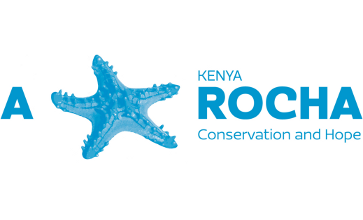The 2022 International Water Bird Count.
Our 2022 waterbirds count began at 5:30 Am on a 22nd Saturday morning. All of us were up on time, ready and excited from this amazing and crucial activity. You may be wondering why the water birds count? Why were we excited about it? I mean why lose our sleep and wake up at such early hours for it? Well, just like the National human census done in Kenya after every 10 years, the bird census is done to estimate the number of all waterbirds for the year during the peak and low seasons. These data (numbers and information) help those in the management to draw up conservation strategies at national and local levels. These strategies aid in safeguarding the integrity of the water bodies as well as making sure the birds are conserved.
The counts help us in establishing the hotspots for these birds, and the conditions they need. Birds are good indicators of the health of the environment. They are easily seen hence can be counted and they are also at the top of the food chain. These numbers tell us exactly how healthy or dying our environment is. Any changes in the conditions of the environment can be easily indicated by a change in their population. The waterbirds count help us not only in the conservation of these birds but also tell us the true state of our environment

Part of the team during the count.
Why is the count only done in January?
The count is supposed to be done twice a year, in January and in June. But because of financial constraints, we are only involved in the January count. January is assumed to be the peak where most of all migratory birds will be around. June on the other hand is when most of these migrants have gone back to their breeding grounds, mostly Europe and Asia. Understanding the maximum and the minimum number of waterbirds is essential for any meaningful planning. Counting at the same time(January), also gives a picture of how many birds are there.
Counts are done across the whole country but A Rocha Kenya coordinates and runs the Coastal sites. These include the South Coast (Diani, Kwale, and Shimoni), Mombasa area (Old rehabilitated quarries of Bamburi Lafarge Ecosystems), Malindi Watamu areas including Mida Creek, Sabaki river mouth, Saltworks (Krystalline and Kensalt Ltd), seasonal lakes and swamps (L.Jilore, Mikimba, Chemchem, Mbaratum) and Malindi Harbor. Tana Delta visited early February has a mix of habitats including mangrove creeks, massive mudflats, and the main Tana River.
These counts are done yearly so that the information collected can be consistent. This makes the data easily comparable to previous years. Consistent is key to understanding any negative or positive trends (whether birds’ population is reducing or decreasing) which might pose questions for further research and study.

A group of greater and lesser flamingos. Photo by Franciska Sprong
What we found this year.
The findings from this year’s count didn’t bring the good news we would have wanted to find. So far, we have only managed to do the Mombasa and Malindi-Watamu areas. A quick analysis of the Malindi Watamu data has shown a great decrease in population. We found 12466 birds of 62 species compared to 23261 birds of 74 species from last year! Seasonal lakes recorded the least numbers in species and counts. Lake Chemchem had a single bird only while Lake Mbaratum had only 4 species!
Even though there is a possibility of some birds foraging and roosting in some other seasonal swamps elsewhere within the pockets of Malindi Watamu, that might have been filled as a result of sporadic heavy showers late December the previous year, the difference is too big! Clear destruction of habitats, especially the riparian has been ongoing. These anthropogenic activities are having a direct impact on the integrity of many water bodies, a home to many birds.

Kirao and the team at Sabaki
What now…
The count didn’t present us with the best of news. But it was worth the effort. The information will be used to conduct more research and also in shaping our conservation goals. We would also like to extend our appreciation to our partners and friends who made this count possible. Turtlebay provided a Van for one day and snacks and water for two days. Friends of Arabuko Sokoke Forest (FoASF) provided a car and driver for one day and Watamu resident (Franceska-Plot 30 Turtle bay Road) provided her car for one day. Carlos and Jaap let us use their telescopes during the entire count.
